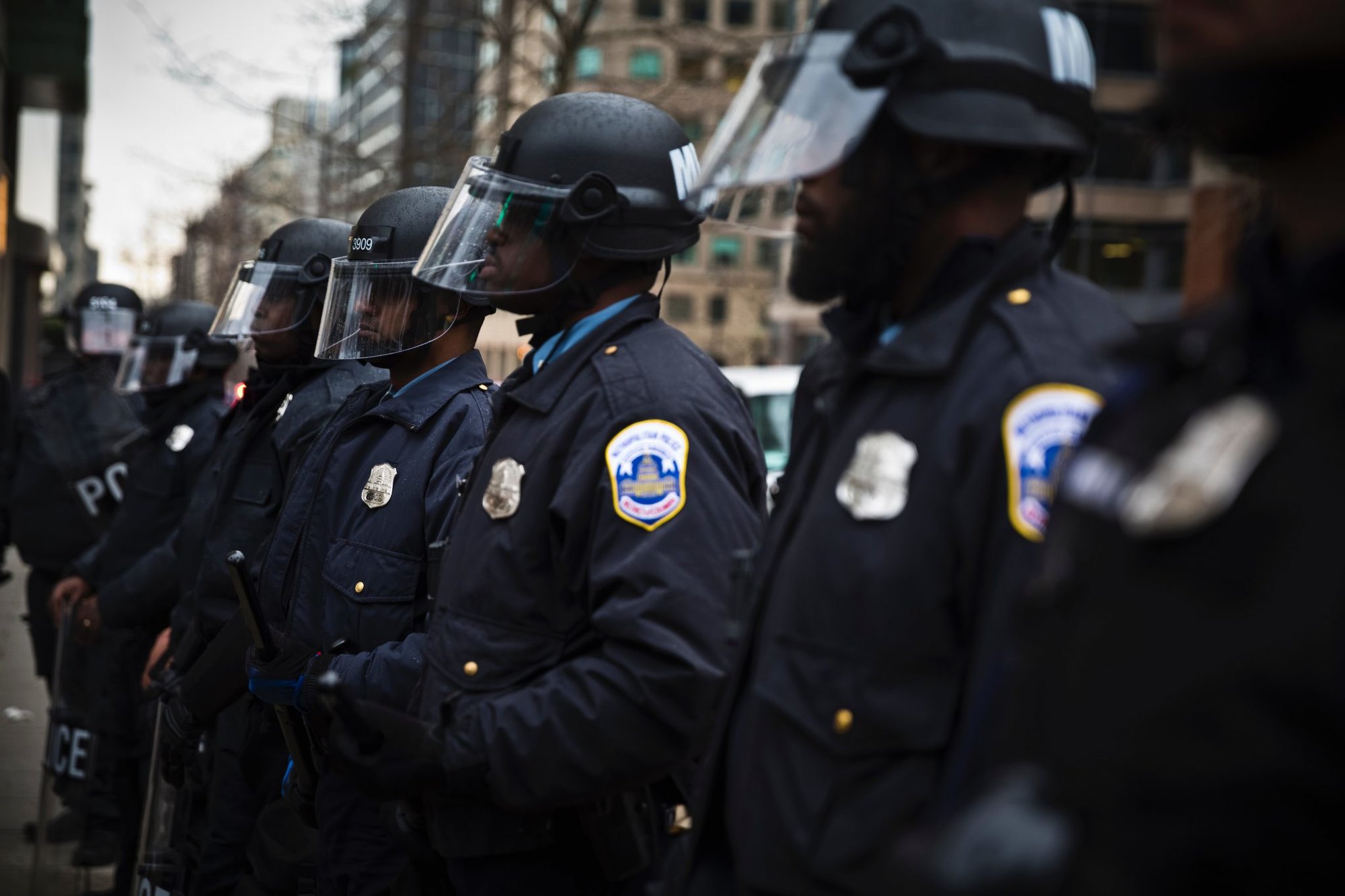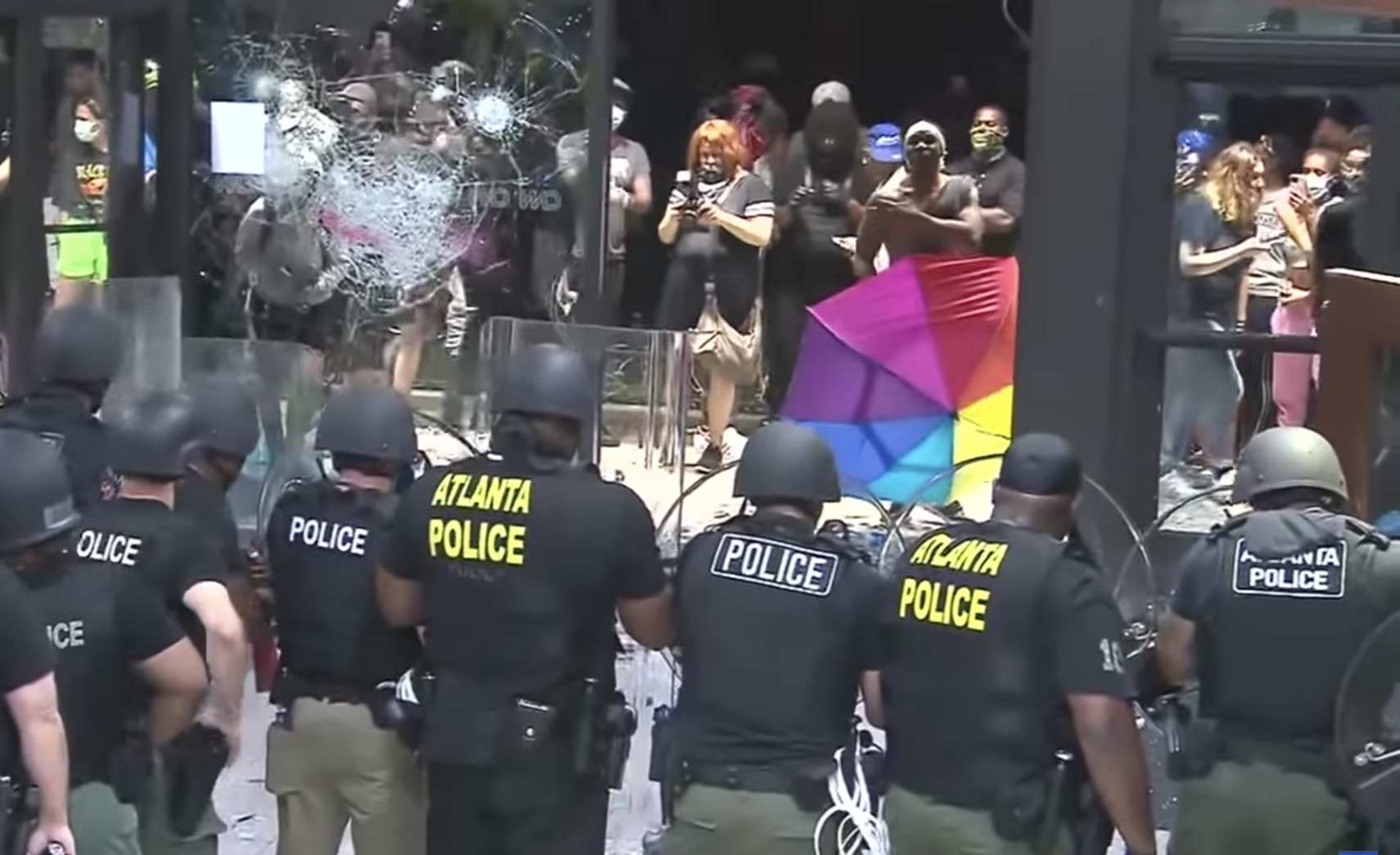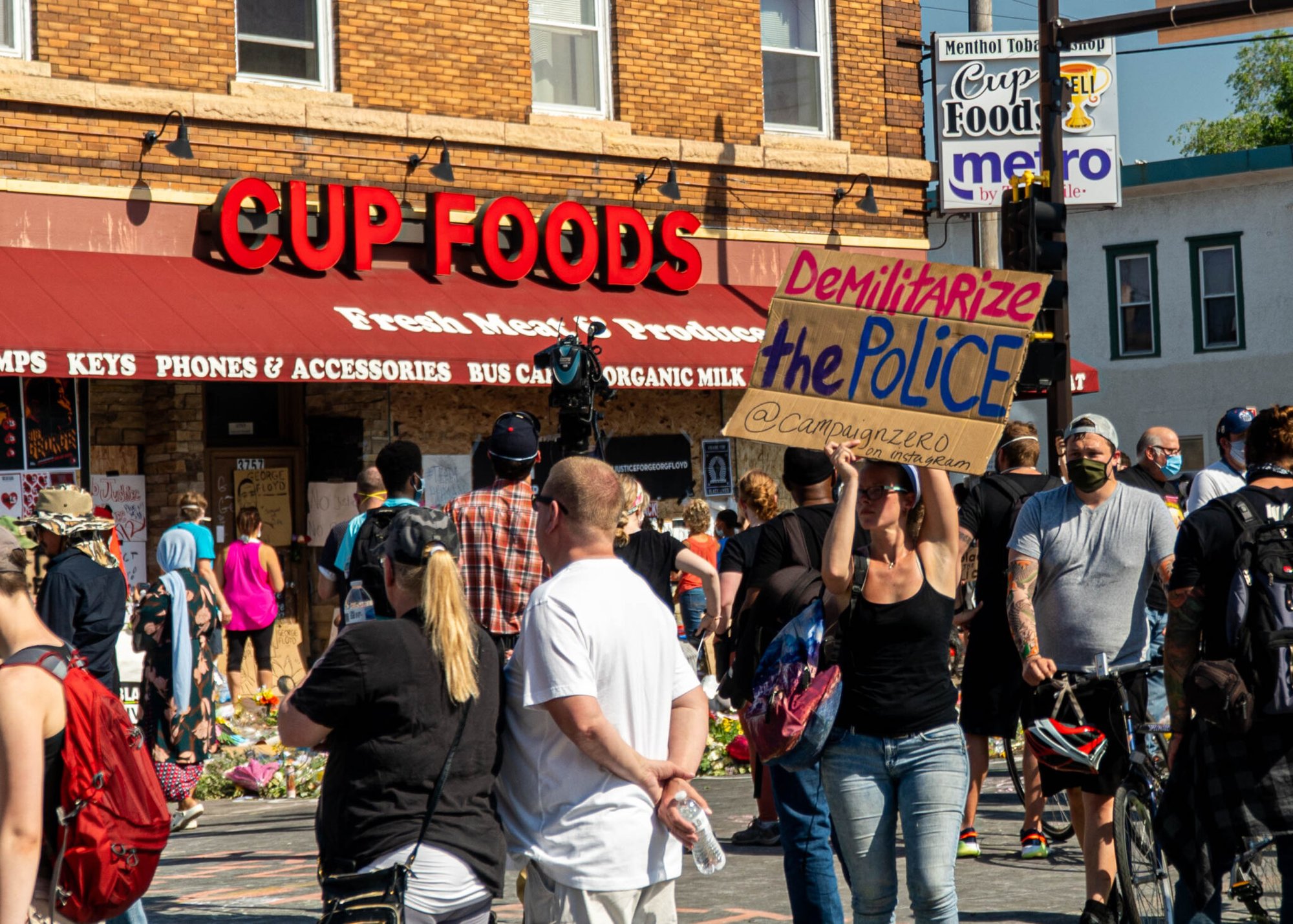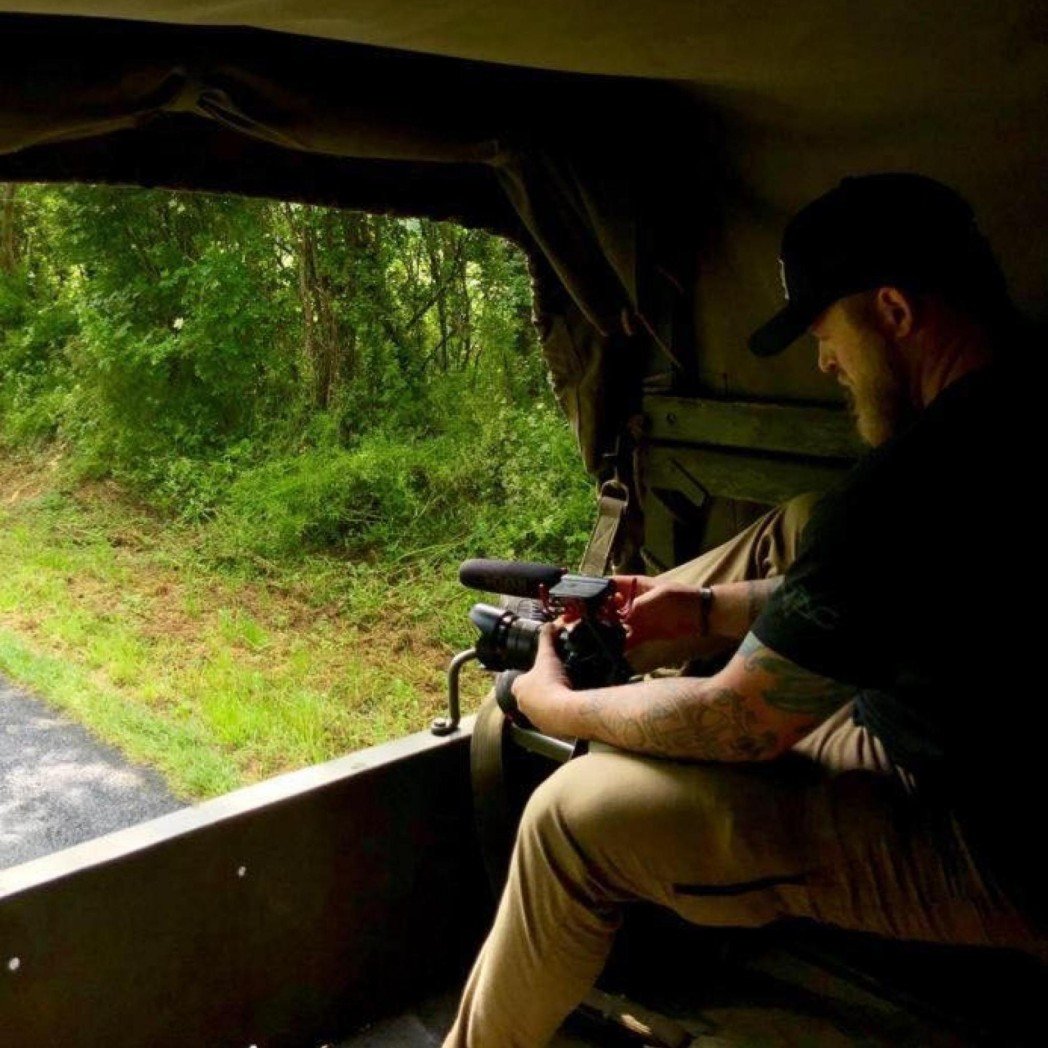Black Law Enforcement Leaders Came Together To Solve Problems Facing Law Enforcement

Photo by Adam Bezer on Unsplash.
Prominent Black leaders in the law enforcement community convened a panel to discuss the problems law enforcement officers face in the current social climate — with the national conversation focused on race and policing — and how to solve them.
National Law Enforcement Officers Memorial Fund CEO Marcia Ferranto said, “[This panel] will give us solutions to creating more support for officers who are tackling significant questions about loyalty to law enforcement, and loyalty to their community.”
The conversation touched on this subject but delved further into steps law enforcement leaders can take to improve relationships between the police and their communities.
The panel members included Lynda R. Williams, president of the National Organization of Black Law Enforcement Executives (NOBLE); Dr. Lorenzo Boyd, vice president for diversity and inclusion and chief diversity officer for the University of New Haven; Sheriff Marian Brown, Dallas County (Texas) Sheriff’s Department; Chief Ernest Finley, Montgomery (Alabama) Police Department; Chief Jeffrey Glover, Tempe (Arizona) Police Department; Sheriff Melody Maddox, DeKalb County (Georgia) Sheriff’s Office; and Shomari Williams, managing partner at Verizon.
Boyd, the moderator, began by asking, “How much do you think communities of color support Black law enforcement? And does that support change based on major incidents?”
“I think for the most part, that communities of color want to be a part of law enforcement,” Maddox, the DeKalb County sheriff, said. “And unfortunately […] as blacks in the community there’s a level of distrust there. And it comes from all the incidents that you have, you see take place […] over the past couple of months, or even years.”
Maddox went on to say that the lack of trust isn’t new and has been ongoing for a while. She believes easier access to cameras and the media has expedited and expanded the ability to show everyone when bad things happen in law enforcement. The way to repair the broken trust, Maddox said, is by getting out into the community and “we, as the leaders, show who we are and that they can trust us. Then, the community is going to say, ‘Well, if I can trust the sheriff and the chief, then I know I can trust the people that they have working for them.’”
Glover, the Tempe police chief, agreed with Maddox and believes the way to repairing the broken trust between law enforcement and the communities they serve is by immersing themselves in those communities.
“It’s important for us to make sure that we are trying to keep that community engagement and ensuring that we are being seen, and we’re visible out there, and we’re creating those relationships and those strong connections within the community,” Glover said. “I can’t really emphasize that more, because right now, especially as things have waned, in terms of support for law enforcement, people are hungry for change, and they’re hungry for reform. And so we have to be a part of that. And we have to drive that narrative.”
Brown, the Dallas County sheriff, said she believes that trust with law enforcement “wanes” with each major incident. She believes that Black communities want to see more Black officers representing their communities, though she specifically said that she doesn’t believe that only Black LEOs should police Black communities.
“As a whole, we want to see folks who look like us, and the reason being is that we tend to understand those little intricacies, if you will, about our group. And so we’re not so prone to be nervous about encounters with people who look like us,” Brown said. “I think that not only do we want representation, but it is absolutely necessary that we have appropriate representation within law enforcement.”
All the panelists agreed that to build up trust, law enforcement needs to reflect the communities they are policing, and one way of doing that is by hiring more officers of color. They moved on to discuss other options that would help build up trust.
Finley, the Montgomery chief of police, said he believes law enforcement needs to stop waiting for major incidents to unfold, like the in-custody death of George Floyd in Minneapolis, Minnesota, where law enforcement was allowed to use chokeholds to gain custody of a subject. Finley said that LEOs need to take steps to get rid of outdated policies that are leading to these major incidents before they even happen.

Maddox said she believes that with equal training for all LEOs and by continuing to update policies and procedures, major incidents will become rare occurrences.
“It’s about again, going back to training your officers, how to treat people, how to talk to people, how to respond to people, regardless of their color,” Maddox said. “It’s about being fair. It’s about not being afraid. It’s about doing your job, and doing it with the expectancy of excellence, accountability, and respect, as we have done here at the DeKalb County Sheriff’s Office.”
In addition to making sure policies are updated and old tactics are discarded, Brown said that leaders in law enforcement need to be continually evaluating their policies, whether there is a major incident or not, as well as the training officers undergo.
Multiple panelists said that LEO agencies need to be emphasizing cultural awareness. Brown gave an example dating back to when she was a new sergeant on a police force and a call came in about a suspicious person. A caller had reported a young Black male as a suspicious person because they hadn’t seen that person in their neighborhood before.
Brown said she had to find the courage to speak up over the radio and push for more information despite her being new. As dispatch relayed further details to her, she didn’t find cause to indicate the person as being suspicious. “The activity is what is suspicious, not the person,” Brown said, and there wasn’t anything suspicious about the person’s actions.
From that point on, Brown’s agency stopped automatically responding to suspicious person calls. Instead, they ask for further information from the 911 caller about why the person is considered suspicious before sending officers to respond. In doing so, they are preventing any unnecessary misunderstandings between law enforcement and the public, such as what happened to Elijah McClain in Aurora, Colorado.
Boyd raised the difficulties law enforcement agencies are facing when it comes to recruitment and retention. Glover responded by saying his department has taken “creative” approaches when it comes to recruitment. They worked with a marketing company to pinpoint ways to attract more females and Black people to the ranks. They increased appeals to those demographics by using Google Analytics and other technology to see who might be interested and to get the Tempe Police Department in front of those people whenever they are looking up anything about law enforcement.
Glover came out of retirement after seeing the video of the in-custody death of George Floyd played over mainstream media and social media platforms. When he returned and walked the halls of the police department, he noticed there were no pictures of Black LEOs on the walls — only photos of white officers.

“I’m looking at all the photos on the walls and everything, and I’m having a Spike Lee moment, because I’m like, there’s no brothers on the wall — none, none whatsoever,” Glover said.
Because of the psychological effect on officers of color within the department, he corrected that lack of representation to make them feel more included and increase retention. Also, Glover enacted mentorship programs for new officers coming into the department in conjunction with strong peer support groups to combat any adverse effects on his officers’ mental well-being.
Finley agreed with Glover’s recommendations and added that he holds a “tough conversation” every six weeks with his officers over whatever grievances they may have, regardless of whether it pertains to race, culture, or other topics. “You got to show your officers that you love them and […] you got to continue to give them that support,” Finley said.
He added that he and his command staff aggressively pursue and investigate any complaints to determine if they are legitimate. By doing so, they are restoring perceptions of legitimacy, both internally and externally.
The last note the panelists touched on was the need for more female law enforcement officers, who may be more likely to talk their way out of a bad situation rather than going straight to physical or lethal options.
Read Next:

Joshua Skovlund is a former staff writer for Coffee or Die. He covered the 75th anniversary of D-Day in France, multinational military exercises in Germany, and civil unrest during the 2020 riots in Minneapolis. Born and raised in small-town South Dakota, he grew up playing football and soccer before serving as a forward observer in the US Army. After leaving the service, he worked as a personal trainer while earning his paramedic license. After five years as in paramedicine, he transitioned to a career in multimedia journalism. Joshua is married with two children.
BRCC and Bad Moon Print Press team up for an exclusive, limited-edition T-shirt design!
BRCC partners with Team Room Design for an exclusive T-shirt release!
Thirty Seconds Out has partnered with BRCC for an exclusive shirt design invoking the God of Winter.
Lucas O'Hara of Grizzly Forge has teamed up with BRCC for a badass, exclusive Shirt Club T-shirt design featuring his most popular knife and tiomahawk.
Coffee or Die sits down with one of the graphic designers behind Black Rifle Coffee's signature look and vibe.
Biden will award the Medal of Honor to a Vietnam War Army helicopter pilot who risked his life to save a reconnaissance team from almost certain death.
Ever wonder how much Jack Mandaville would f*ck sh*t up if he went back in time? The American Revolution didn't even see him coming.
A nearly 200-year-old West Point time capsule that at first appeared to yield little more than dust contains hidden treasure, the US Military Academy said.












